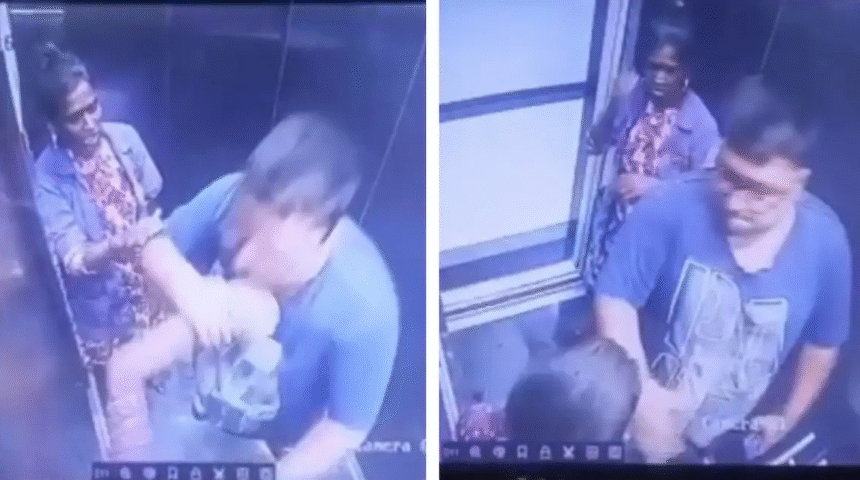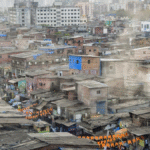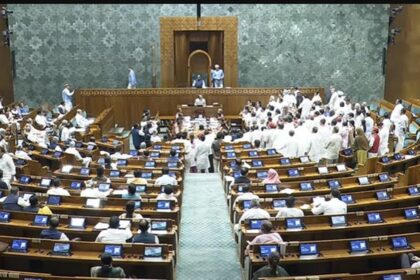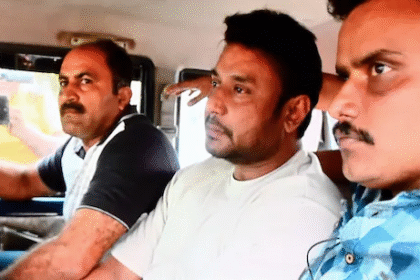Shocking CCTV: 1 Man Bites 1 Child Over Lift Door Incident in Thane Apartment
Shocking CCTV shows 1 man biting 1 child over a lift door incident in a Thane apartment, raising serious concerns about public safety and behavior.
Incident Overview and Timeline
On July 4, at approximately 5:00 PM, a deeply unsettling incident occurred in a residential building in Ambernath East, located in Maharashtra’s Thane district. The episode, captured on CCTV and subsequently circulated widely on social media platforms, revealed the shocking assault of a 12-year-old boy inside an apartment lift. The minor, who was en route to his tuition classes from his 14th-floor residence, was violently attacked by an adult male resident within the confines of the elevator.
The alleged perpetrator, identified as Kailash Thawani, became irate after the young boy did not hold the lift door open for him on the 9th floor. Moments later, Thawani entered the lift and initiated a brutal physical attack. The CCTV footage, now viral, clearly depicts the sequence of aggression. It shows Thawani confronting the child, slapping him repeatedly, forcibly restraining him by pinning his hands, and ultimately biting the boy on his hand—a rare and disturbing form of physical abuse.
During the incident, Thawani also verbally threatened the boy, reportedly saying, “I will stab you outside,” further escalating the psychological trauma inflicted upon the victim. The assault did not cease within the lift; it spilled over into the building lobby, where it persisted despite attempts at intervention by a member of the housekeeping staff.
In the wake of public outrage, significant pressure was mounted on law enforcement agencies and building management. Initially, there was a concerning delay in police response. It took four days after the event—and after the footage had already incited widespread condemnation online—for an official First Information Report (FIR) to be lodged against Thawani.
Legal Developments and Public Response
The delayed registration of the FIR has raised questions regarding the responsiveness of the local police and the role of residential societies in handling such grievous incidents. According to preliminary police reports, the FIR includes charges under various sections of the Indian Penal Code related to assault, criminal intimidation, and causing hurt to a minor.
The victim’s family, visibly shaken by the assault, expressed frustration with the initial inaction by the authorities. They allege that efforts to downplay the incident were made at the society level, and that it was only after the video gained traction online that the police took serious notice.
Social media has played a significant role in amplifying the voices demanding justice. Numerous child rights activists, public figures, and ordinary citizens have condemned the attack and called for immediate legal consequences for Thawani. The virality of the CCTV footage led to intervention from higher police officials, who assured swift and impartial investigation into the matter.
Psychologists and child welfare experts have also weighed in on the long-term emotional impact such an assault can have on a child. Physical abuse combined with verbal threats can lead to post-traumatic stress disorder (PTSD), anxiety, and a diminished sense of safety, especially within what should be the protective environment of one’s own residential building.
Currently, the police have recorded statements from the victim, his family, and eyewitnesses including the housekeeping staff who intervened. Medical evaluations have been conducted to document the physical injuries, including bite marks and bruising, which further substantiate the child’s testimony.
As the investigation progresses, the spotlight remains firmly on the accountability of the residential society’s management, the role of law enforcement in ensuring timely justice, and the broader issue of child safety in urban residential environments.
Psychological Trauma and the Child’s Recovery
The psychological consequences of the attack on the 12-year-old victim are now the subject of growing concern among child protection experts and mental health professionals. The violent nature of the incident—being assaulted, bitten, and threatened inside the confines of his own residential building—has likely triggered acute trauma in the child.
According to preliminary psychiatric assessments, the boy is exhibiting signs of distress, including disturbed sleep, heightened anxiety, and a reluctance to enter the lift or leave the apartment alone. These reactions are consistent with symptoms of post-traumatic stress disorder (PTSD), often experienced by minors subjected to unexpected and severe aggression.
The family, acting under medical advice, has initiated counseling sessions with a certified child psychologist. Experts warn that if left unaddressed, the trauma could result in long-term psychological repercussions including social withdrawal, trust issues, and chronic fear.
There is also concern about the academic disruption the child may face. He has reportedly missed several tuition sessions and school days following the incident. The educational institution he attends has offered support and is working with the family to provide a safe and accommodating learning environment.
The Role of Residential Societies in Child Safety
The Ambernath East housing society, where the incident took place, has come under scrutiny for its delayed and allegedly inadequate response to the assault. While the CCTV cameras functioned correctly and provided clear evidence of the attack, residents and activists have criticized the society’s management for not taking immediate action.
Questions have emerged regarding whether there was an attempt to suppress the incident or discourage the family from pursuing legal action. If true, such actions could amount to obstruction of justice and warrant independent investigation.
Under the Maharashtra Apartment Ownership Act and other residential guidelines, societies have an obligation to ensure the safety and security of all residents, especially minors. Legal experts now argue for mandatory protocols for residential communities, including immediate escalation of assault complaints to police, swift internal resolution committees, and designated child protection officers.
Legal Framework and IPC Charges
Kailash Thawani has been charged under several sections of the Indian Penal Code, including:
- Section 323 (Punishment for voluntarily causing hurt)
- Section 506 (Punishment for criminal intimidation)
- Section 350 (Use of criminal force)
- Section 324 (Voluntarily causing hurt by dangerous weapons or means)
- Section 75 of the Juvenile Justice Act (Punishment for cruelty to child)
Legal experts argue that the use of biting—a form of bodily assault considered particularly violent—may qualify the case for harsher punishment. If proven guilty, the accused could face up to three years in prison, along with monetary fines and community service, depending on judicial interpretation.
The case is being closely monitored by child rights commissions and advocacy groups, who have requested to be made parties to the judicial proceedings.
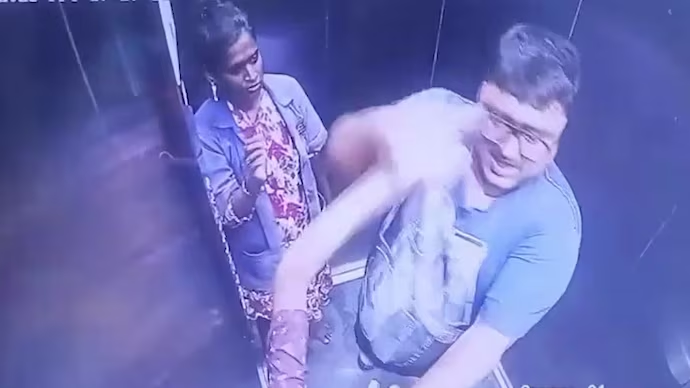
Media’s Role in Amplifying the Incident
The incident received relatively little initial coverage in mainstream news media. However, once the CCTV footage began to trend on social platforms such as Twitter, Instagram, and YouTube, the media quickly amplified public concerns.
Leading national dailies and TV news channels began covering the story, highlighting the gaps in police response, the psychological trauma faced by the victim, and the demands for justice. Hashtags such as #JusticeForThaneBoy and #LiftAssault began trending, adding pressure on local authorities.
While media coverage helped draw attention to the case, some experts warn about the secondary trauma that can be inflicted when sensitive footage is replayed repeatedly, especially when identifying details of the victim are not blurred. Child protection guidelines recommend anonymizing such content to prevent further distress to minors.
Community Responses and Activism
The residential community and surrounding neighborhoods have reacted strongly to the assault. A candlelight vigil was held outside the building complex in solidarity with the victim. Residents from nearby apartments joined in expressing outrage and solidarity.
Child welfare organizations, including the Maharashtra Child Rights Observatory and Save the Childhood Foundation, have demanded a fast-track judicial process. They have also initiated petitions calling for legislative changes mandating stricter penalties for adult perpetrators of violence against minors within residential complexes.
Workshops and awareness sessions are now being planned for children and parents, covering topics such as recognizing unsafe behavior, responding to threats, and reporting abuse. There are also plans to train society staff, including security and housekeeping personnel, in child protection protocols.
Thawani’s Background and Mental Health Evaluation
Little was known initially about the background of the accused, Kailash Thawani. Subsequent reports reveal that he has been residing in the building for over six years and was previously involved in minor disputes with neighbors over lift usage and common area conduct.
Given the aggressive nature of the attack, the court has ordered a psychological evaluation of Thawani to determine if any mental health issues influenced his behavior. This will be conducted by a certified forensic psychologist and may affect the direction of the trial.
If the evaluation reveals diminished mental capacity or a diagnosed psychiatric condition, the court may opt for treatment-based sentencing rather than purely punitive measures. However, legal experts emphasize that mental illness cannot be used as an excuse for violent behavior unless it meets strict diagnostic and legal thresholds.
Policy Recommendations and Systemic Gaps
This case has sparked a wider conversation about gaps in urban child protection frameworks. Experts are recommending:
- Mandatory reporting of all child assault incidents by residential societies
- Installation of panic buttons inside lifts
- Annual child safety audits in apartment complexes
- Mandatory psychological testing for residents involved in prior incidents
Urban planners and safety experts are also suggesting integrating smart surveillance with AI-driven behavior detection to flag potentially aggressive behavior in public and semi-private residential spaces.
The Road Ahead – Toward Justice and Healing
As the legal case progresses, the primary concern remains the child’s full recovery—emotionally, physically, and academically. The family continues to receive counseling and has filed a formal complaint demanding not just criminal prosecution, but also community-based safeguards.
Thawani’s bail plea is scheduled for hearing next week. The court has asked for detailed reports from the police, society management, and child welfare officials. Depending on the judicial outcome, this case may serve as a precedent for future residential safety reforms.
Also Read : Aralam Sanctuary Named India’s 1st Official Butterfly Species Habitat in Kerala


